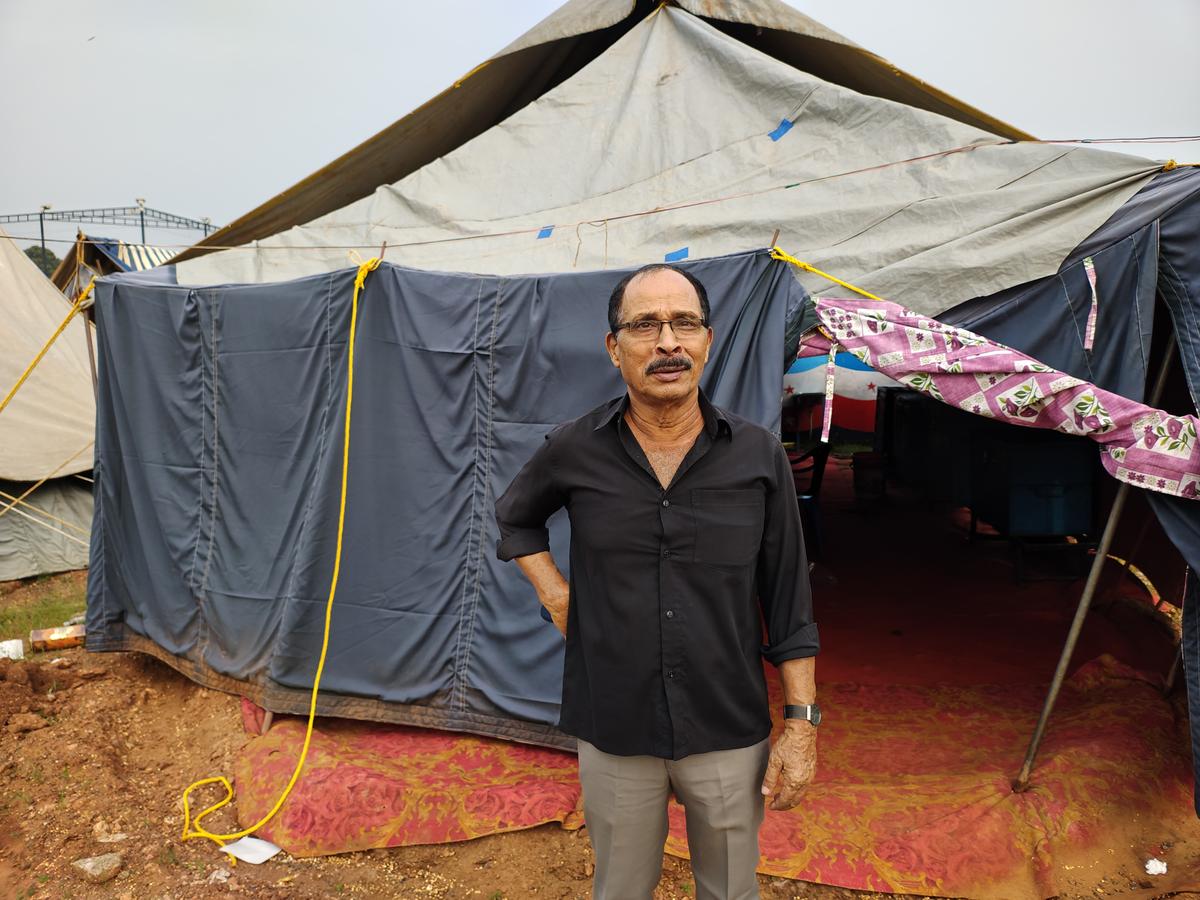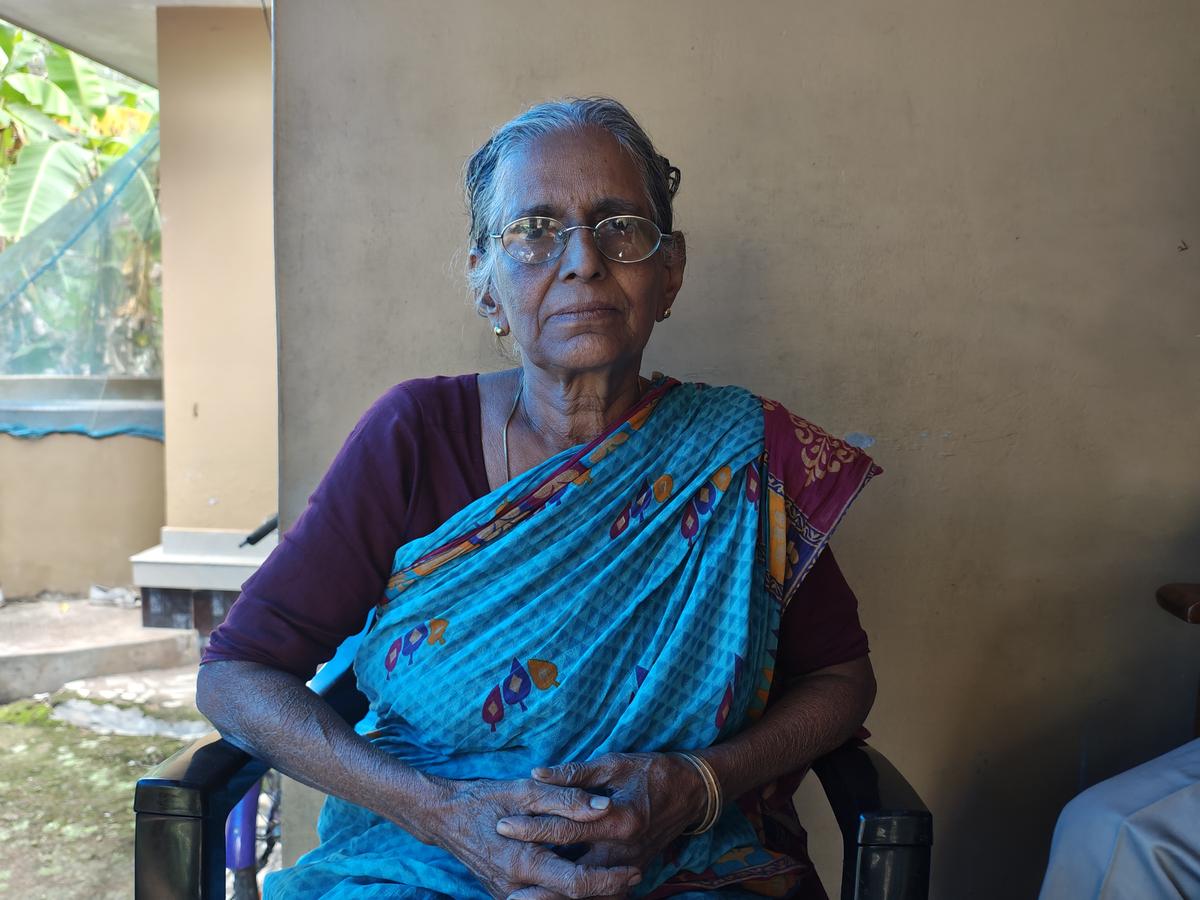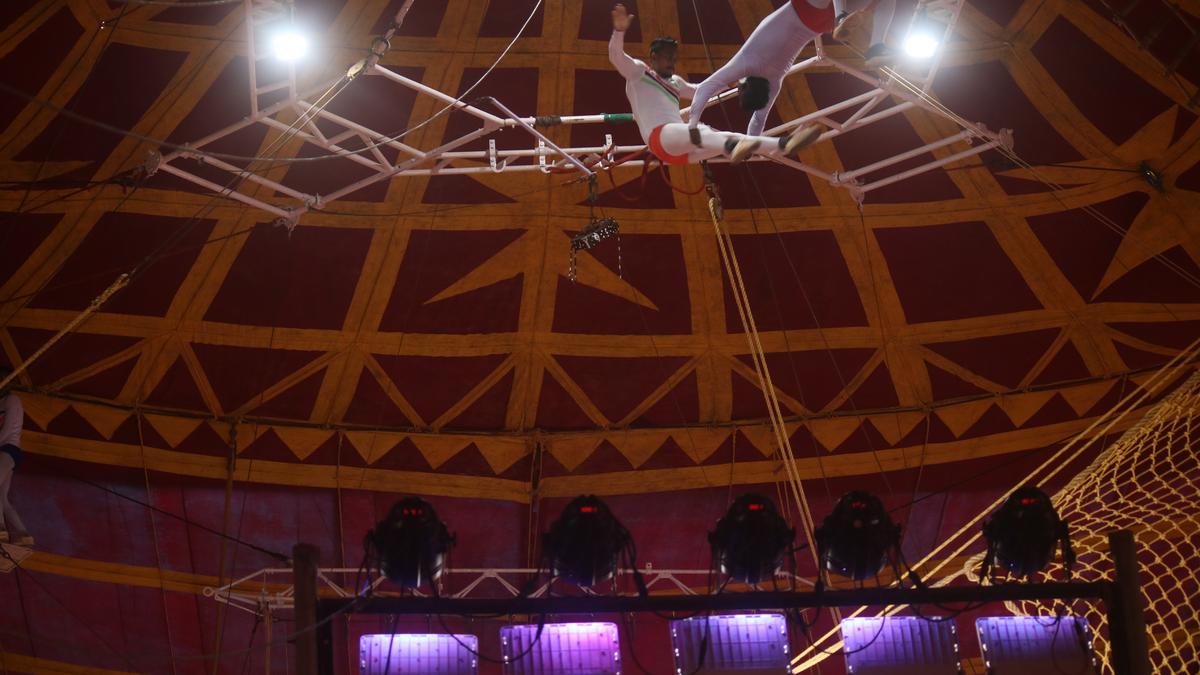Lying on his bed cushioned with folded sheets and towels, Babutty, the yesteryear star among the circus artistes of Thalassery, vividly remembers the day on which his life changed forever.
It was the 28th day of September, 2002. A youthful Babutty, dressed in flashy costumes, enthusiastically waved to the crowd from the circus ring. The crowd roared back in appreciation on seeing the superstar of the circus ring. The galleries of the Gemini Circus in Gwalior, Madhya Pradesh, were packed to capacity.
He was to perform a cross-passing routine, a daring act in which one performer swings up on the ropes while the other comes down, with the help of two catchers set to catch and release the artistes.
Unfortunately, while swinging down, one performer failed to let go of the catcher on time, forcing them to grab Babutty with only one hand. The catcher couldn’t hold him. As his grip loosened, Babutty suddenly slipped out of the catcher’s hand and fell on the side of the net on his back.
Babutty, a circus artiste who has been bedridden for 23 years following a fall from the trapeze.
| Photo Credit:
Nainu Oommen
A moment of deafening silence ensued. Then the crowd let out a collective gasp. There was panic everywhere. The world came to a standstill for Babutty.
“When I regained consciousness, I could feel a numbness down my spine. I tried in vain to move my limbs,” recalls a worn-out Babutty, who has been bedridden for 23 years. It was poverty that drove him and his elder sister, Sheela, to the circus owned by his neighbour M.V. Sankaran, the founder of Gemini Circus.
“Back in those days, there would be five or six children in a family, and one or two would be sent to the circus. These children would work there, and their parents would raise the other children with the earnings from the circus,” explains N.K. Vijayendran, a senior circus artiste, sitting next to Babutty.
Ramanathan, now a septuagenarian, was born into the circus. His parents, Raghavan and Devaki, were circus artistes. “My father owned Ranjini Circus. Of my ten siblings, only I joined the circus. The rest made their career elsewhere,” recounts Ramanathan, as he limps back home along the country roads of Thalassery. The fall he suffered a few days back has left him partially limping. Ramanathan is now a shadow of his better years. So is the circus industry.
SC order, a bolt from the blue
The downfall of the Indian circus, say elder artistes, began 14 years ago when the Supreme Court banned the employment of children and adolescents below 18 years in circus.
This left the circus camps populated with greying artistes, with some taking up jobs as trainers. The local artistes were replaced with those from Nepal, Africa and Russia.
“Sankarettan (M.V. Sankaran) treated us like his own children. The company regularly brought us food and clothes and paid a weekly allowance. The food was great as well. On Sundays, we feasted on chocolate,” remembers Ramanathan.

K. Narayanan, who was popular as ‘Flying Trapeze’ Narayanan during his heyday.
| Photo Credit:
Nainu Oommen
K. Narayanan, once popularly known as ‘Flying Trapeze’ Narayanan, joined the circus when he was a Class V student. “I did not want to study then. Also, we didn’t have enough resources to meet my educational expenses,” says Narayanan.
For many women like Vijayalakshmi, a native of Thalassery, who didn’t pursue her education, a job at the circus was an opportunity to earn. She joined the Great Oriental Circus at the age of four. Her aunt took her there.
Seeing the world, via circus
She remembers how the job took her to places such as Malaysia and Singapore where she wouldn’t have gone otherwise. “We travelled all across India and performed in almost all major cities,” she says.
The artiste, who once used to do balancing acts and ride bicycles on tightly stretched ropes, recalls bringing home a Panasonic radio after a Singapore tour a few decades ago and how her family and neighbours flocked to it.

Vijayalakshmi, who joined the Great Oriental Circus at the age of four
| Photo Credit:
Nainu Oommen
Uma Devi, a native of Thalassery, who grew up watching her father, Koran, train other circus artistes, faced stiff resistance when she expressed her desire to join the industry. Her persistence won, and she eventually joined the industry. However, Uma was asked to quit the ring at the age of 19, as her father wanted her to get married and settle down. A few years later, Uma tied the knot with a circus artiste, Narayanan, who was also not keen on her continuing in the circus.
Fate willed otherwise as Narayanan was seriously injured during a practice session of the team in Patna. “He was badly wounded in the accident. I still remember taking him to a nearby hospital, all drenched in blood,” recounts Uma.
Narayanan had to undergo prolonged medical treatment, and poverty forced their children, Reena and Preeja, aged four and six, to join circus. “I performed in the ring for 20 more years. With the little money that I earned, I funded my husband’s treatment and married off my daughters,” she says. Yet, she’s far from being contended. “I couldn’t save anything for old age.”
Meagre monthly pension
Many artistes got parcels of land from the circus owners. Vijayalakshmi is one among them and she built a house on the holding. Many feel the circus artistes from Kerala are relatively better off than their counterparts in other States, thanks to the government decision to provide them a monthly pension of ₹1,600. In Kerala, as many as 1,113 retired circus artistes are being offered the pension, says P. Vishnuraj, Director of Sports and Youth Affairs.
Circus artistes, however, point out how difficult it is to thrive on such a meagre amount. “Medicines and allied health care expenses and the cost of living has shot up,” says Babutty.
An earlier attempt by the Kerala Sangeetha Nataka Akademi to provide circus artistes with a medical insurance scheme had not made any headway. Divya S. Iyer, the Director of Cultural Affairs, hopes to revive the proposal. “We can take a re-look at the proposal for an insurance scheme for artistes,” she says.
Govt. bans use of animals
The downward slide of circuses and the artistes’ lives was accelerated by the government decision to ban the use of animals in the trade in the late 90s.
Though many units replaced animals with robotic ones, it didn’t hold much charm for the circus enthusiasts. Industry veterans say that the excitement of watching elephants, bears, and lions perform is missing when robotic animals present the same acts.
“People used to come to the circus mostly to watch the wild animals from close quarters,” recounts K.P. Rajan, a trainer and mechanic with Jumbo Circus. “Earlier, we had 18 elephants with Jumbo Circus. Lions, bears, monkeys, and parrots were among the company’s proud possessions. The ban on animals has hit us hard,” says Rajan, sitting in a tent of the Jumbo Circus camp in Payyannur, Kannur, even as workers busily wrap up and load the circus properties into trucks.
Barring the big industry names like Gemini, Jumbo, Apollo, and Great Bombay Circus, most of the other players have left the scene for good. “The smaller circus groups in north India are struggling to stay afloat,” rues E. Ravindran, a trainer with Jumbo Circus.
“Life has gone out of this industry, which is in its sunset years. It’s only a matter of time before the remaining ones too down the curtains. There are no new artistes, practice sessions, or trainers. The end is nearing fast,” he adds.
Divya says circus has remained unchanged from her childhood days. “The industry couldn’t keep up with the changing times. It needs to reinvent itself to stay relevant for the younger audience,” says the bureaucrat.
A bit too late for revival
P. R. Nisha, author of the book Jumbos and Jumping Devils: A Social History of Indian Circus feels that it might be too late for the revival of the circus.
“I feel it’s quite difficult for the circuses to recover from the impact of the ban on the use of animals and employing children. Both decisions have spelt doom for the industry,” she says.
Even veteran artistes admit that the circus has lost its charm, which is nearly impossible to restore. “Circus doesn’t thrill us any more,” admits Nalini, a former artiste of the Great Rayman Circus.
Gone are the days when the arrival of the circus team in a town or the countryside created ripples in the area and people queued up to buy tickets. Like its greying artistes, the industry too is slowly yielding to the inevitable. Yet, the legacy left by the artistes and the art form should live long.
Published – April 17, 2025 11:22 pm IST
